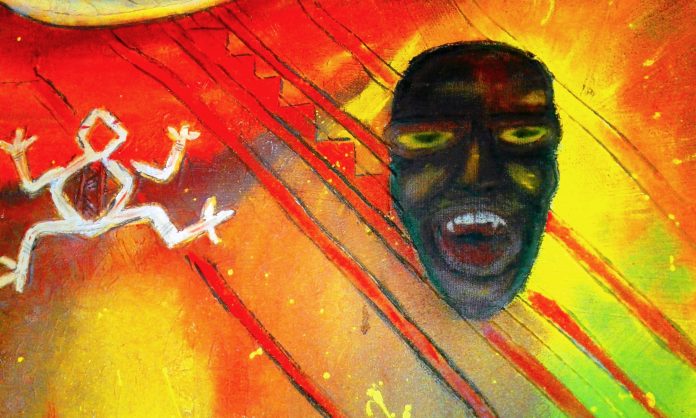Our goal at Etnia Nativa is to create cultural awareness, promote education and safeguard our heritage by guiding our readers to become the next and new guardians of Aruba.
In this episode we will raise awareness regarding “Shamans” spiritual guides, priest or priestess who uses magic spells, potions and auto conviction in order to heal the sick, divine the occult, and control events. Historically, it has been anthropologists who identify these central figures who where attributed the title of “Shamans” or pajés and not the indigenous people. Shamanism is not associated with any particular religion nor is it itself a religion. Instead, shamans across the world belong to different organized spiritual view shamanism is considered related to animistic spiritual practice.
Shamans act as mediators claiming to communicate with the spirits on behalf of the community, including the spirits of the deceased and those of the underworld. Shamans believe they can communicate with both living and dead to alleviate unrest, unsettled issues, and to deliver gifts to the spirits, etc.
It is impossible to characterize “shamanism” or “shamanic teaching practices” belonging to a single indigenous group of lowland South American and Caribbean. Their knowledge and practices vary considerably between groups due to defferent regios and the natural resoursec aviable.
Many “shamanic specialists” ritually administer substances for beneficial purposes, but an equal number of these individuals are recognized for their potential to send harm to others.
Among our Caquetios ancestors, Shamanism was expressed during the Cohoba and Maco ceremonies. Shamans organized ceremonies by serving chicha in calabash, corn beer to important men of the community who lateron will inhaled a preparation consisting of a psychoactive powders or tasted poisonous back of a cane toads. Sitting on a rock or a wooden stool, they would first stick a kind of spatula down their throat, purging their stomach and purifying the soul to receive the sacred message and power to enter the speritual world. The cohoba ritual was intended to help its practitioners to contact deities or spirits. And for the Shaman to diagnose illnesses and predict the future. On the other hand, it has been interpreted to empower the practitioner to transmit and as a propitiatory to the ceramic effigies and diaties that were buried in Cunucos, which in turn transmit powers of fertility to the agricultural purposes, to supply abundant yucca, maize, beans, peanuts, tabaco and pumpkins.
The practice of using Yopo or cane toad excretion was always dangerous for those experimenting whit it, and did not always help the participant achieve any vision. Still, it was a very important religious practice which has its roots in Caquetian spiritualism. It is believed that the cult dedicated to nature spirits was practiced along with their mythological believes. Given the heterogeneity of language and culture,
The story goes tells thatn some, shamanic practitioners vision is acquired through dreams, without a formal apprenticeship, It is generaly accepted that all people share a bit of shamanic powers. Others have formal apprenticeships with masters.
In some cases the aggressor may be the same person who heals. Among the Arawakans of the Rio Negro and Guyana regions, there are a plurality of specialists who are classified by intention and by techniques. The potison owners can cause harm or healing by appliyeng their plant knowledge. Anyone who knows the right chants can cause harm. There are a variety of healers, who are distinguished by their secret knowledge and the substances and therapeutic techniques.
Aboriginal tribes of the Caribbean, Central and South America, including the Caquetioan groups of our islands, used to ground the seeds of the plant *Ana denantera preregrina together with other herbs and grinded snails or shells, which they burn and then add the mixture into a container for its elaboration. This they obtain through the sacred fire ritual. In this way they obtained a fine powder, essentially hallucinogenic, that was inhaled or blown in the nose of the companion either as a remedy or for spiritual trance, known as hecura to the Yanomamis of the Amazon region. A trance that facilitates the interpretation of messages, trowing effective spells and the offering of blessings through open portals of eathly power.
If you love Aruba its origins and its cultural heritage, be part of the exclusive visitors of Etnia Nativa: a cozy museum/home .This private residential houses collections of native art, archaeological artifacts and historic furniture, while the facilities themselves are the result of the transformation of recycled materials. Meet Anthony Croes, our columnist at his home! Book your visit Whatsapp + 297 592 2702- or mail: etnianativa03@gmail.com




















